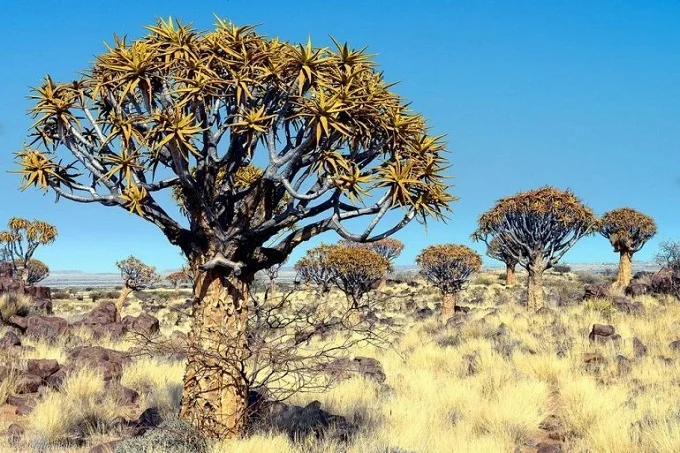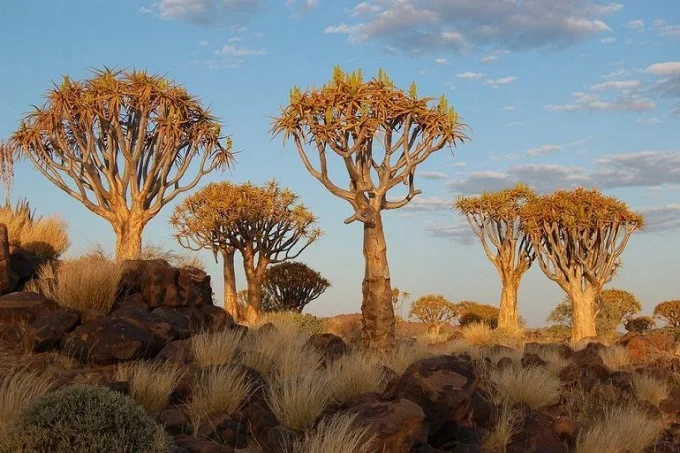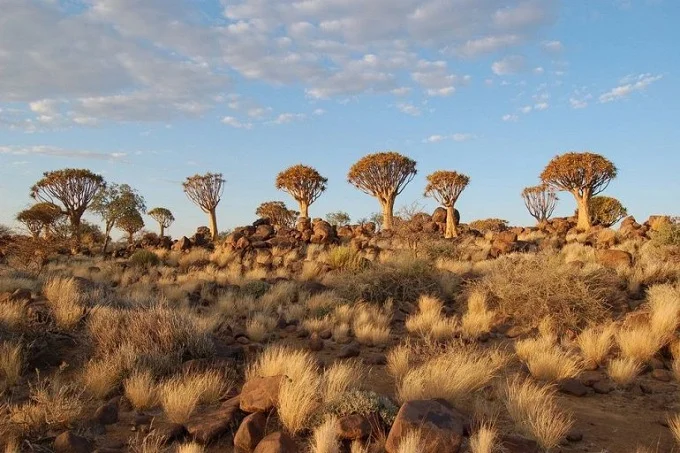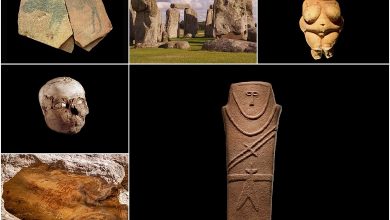Quiver tree facts: Unique Quiver Forest in Namibia

Namibia’s Quiver Forest is one of a kind. On the approach to the little community of Coes in southern Namibia, the Quiver Tree Forest is situated 14 kilometers northeast of the town of Keetmanshoop.
On private property, there are roughly 250 individuals of the quiver tree or Aloe dichotoma. This tall, migratory aloe may be found in northern South Africa and southern Namibia regions, and the quiver tree’s distinctive look has made this region a famous tourist destination.
The quiver tree is not really a tree, but rather a variety of the aloe plant, capable of reaching tree-like proportions of 7 to 9 meters in height. Aloe dichotomum has a sturdy stem that can grow to one meter in diameter.
The crown consists of numerous branched offshoots, which gives the variety the name dichotoma, which means “branched”.

Each branch is topped by a spiral of dense and succulent leaves, typical of all aloes. Unlike the scaly surface of the trunk, the offshoots are completely smooth and covered with a thin layer of whitish powder, capable of reflecting the sun’s rays.
When winter sets in in the southern hemisphere between June and August, the quiver tree blooms bright yellow, attracting many birds and tourists.
The tree is called the quiver tree because indigenous people have long made their quivers from branches of the aloe dichotomus.

The quiver tree does not actually have wood, but the soft, fleshy flesh can easily be used for a variety of purposes.
One end of the hollow stem is covered with a piece of leather and used to store arrows.
The natives also used this tree to store food and water.
The fibrous flesh of the aloe has a cooling effect because it lets air through. This allowed the locals to preserve perishable foods for a longer period.

In addition to their historical use by natives, these trees are of great ecological importance. Many insects, animals, and birds flock to the nectar-rich flowers.
The tree also provides nesting habitat for vast numbers of weaver birds. Birds create nesting habitats among the branches that protect their chicks from high temperatures and predators.
Although this unique forest is not on the list of the world’s largest forests, it is one of Namibia’s most outstanding landmarks.
The Aloe dichotoma tree is classified as a vulnerable species. Its greatest threat is globally rising temperatures and decreasing rainfall. But the species resists, slowly spreading to colder areas at higher latitudes and higher altitudes.
The tree is protected by law in South Africa, and the Quiver Forest is a national monument in Namibia.




